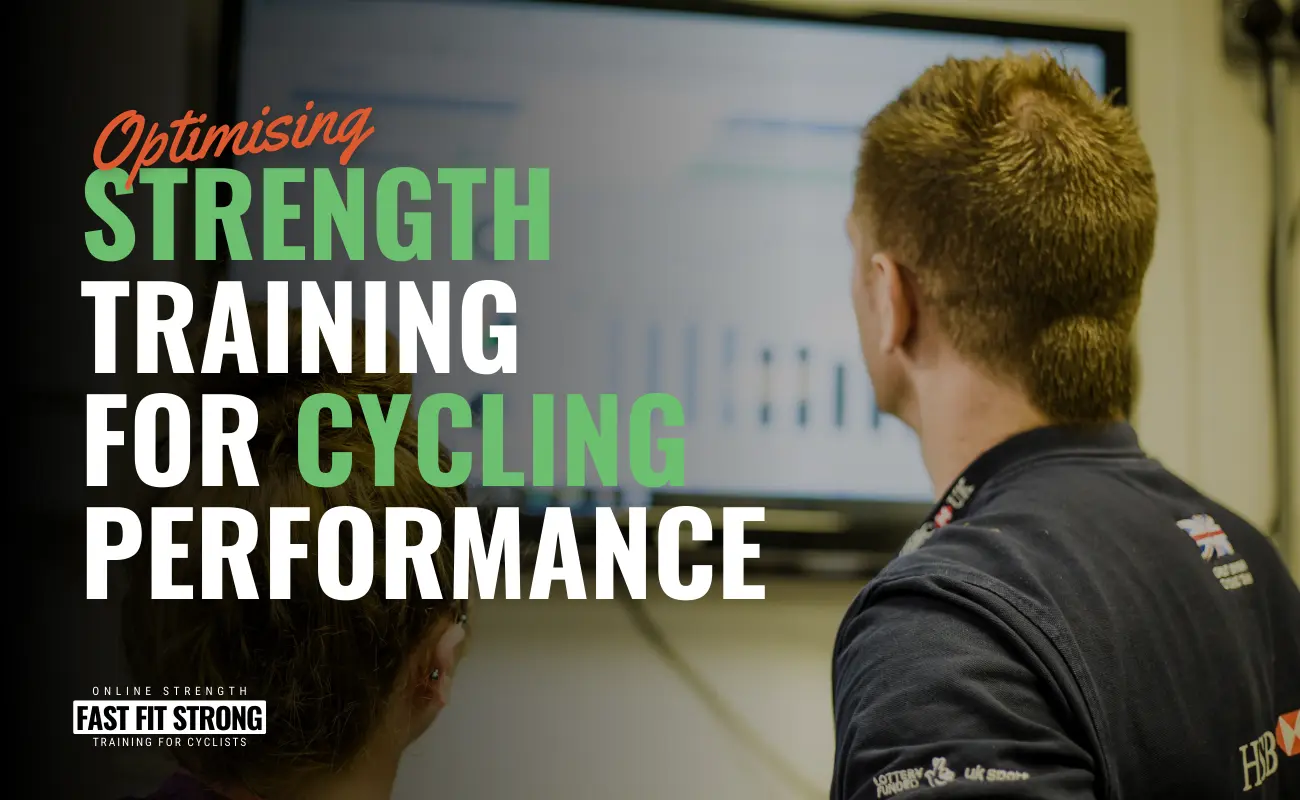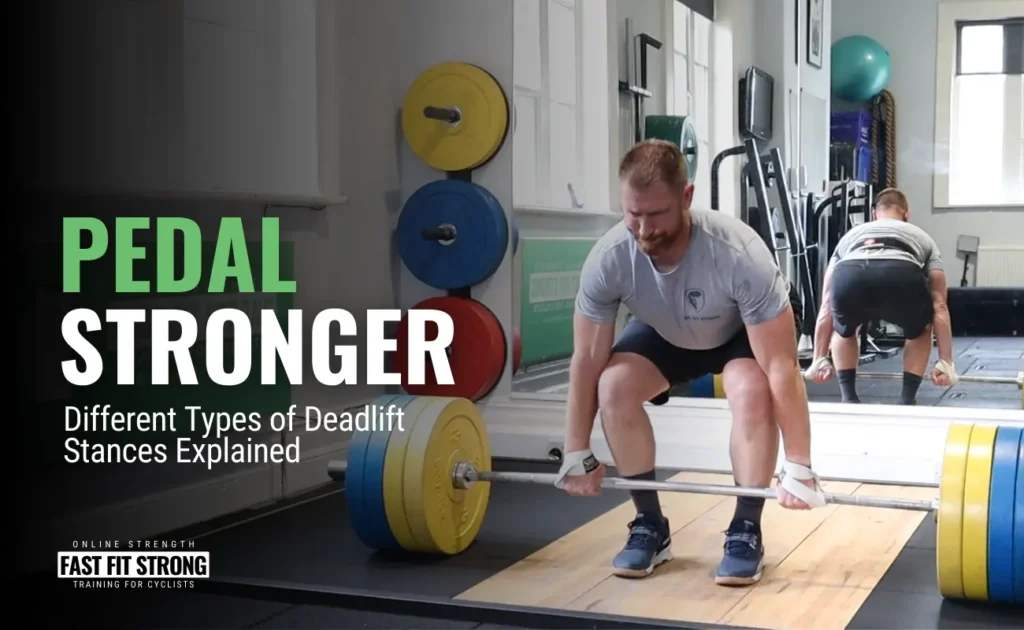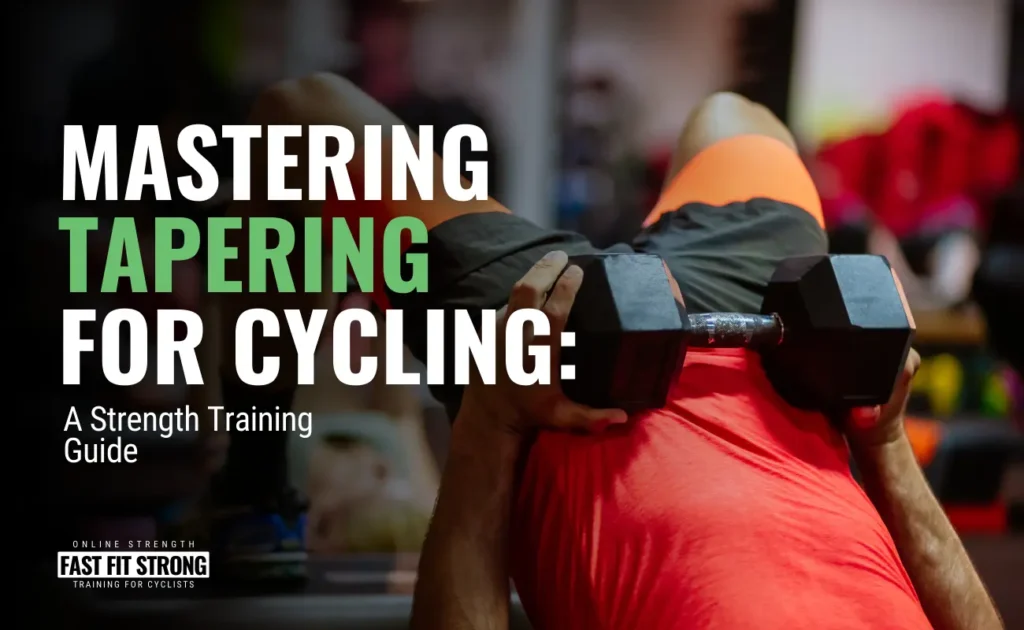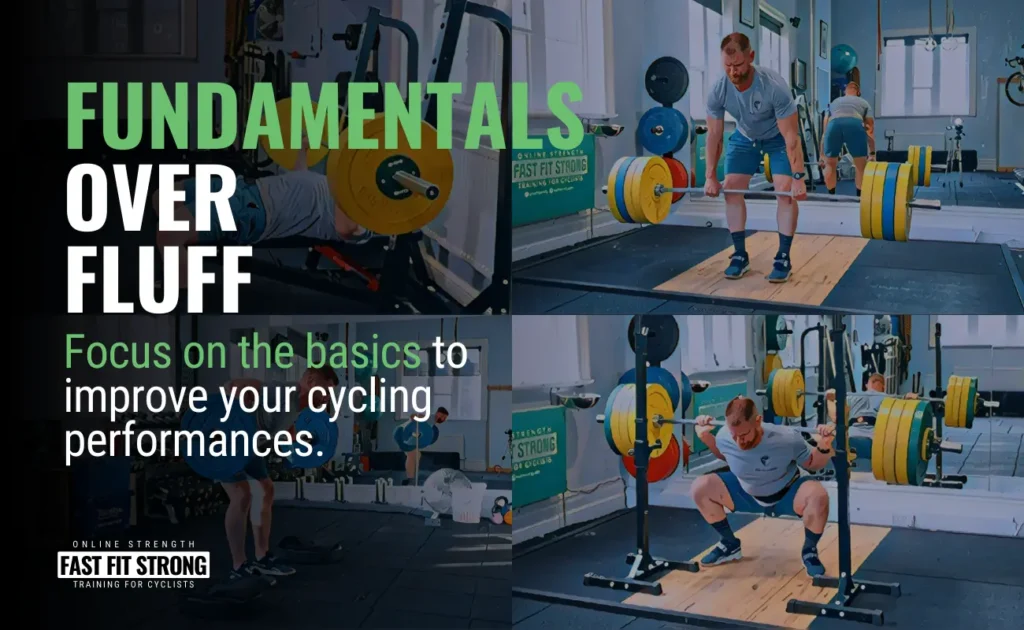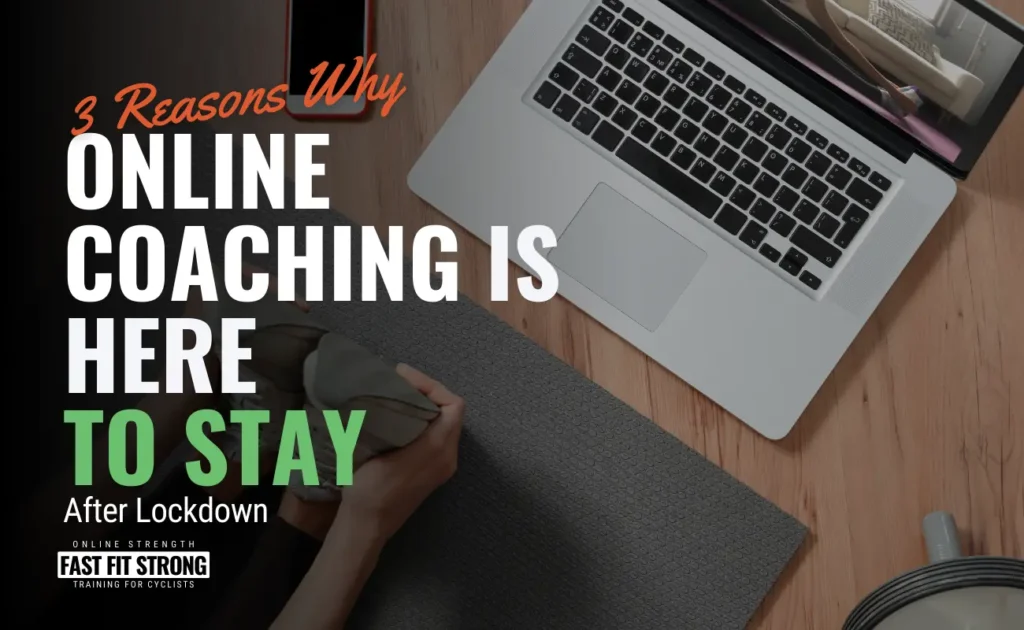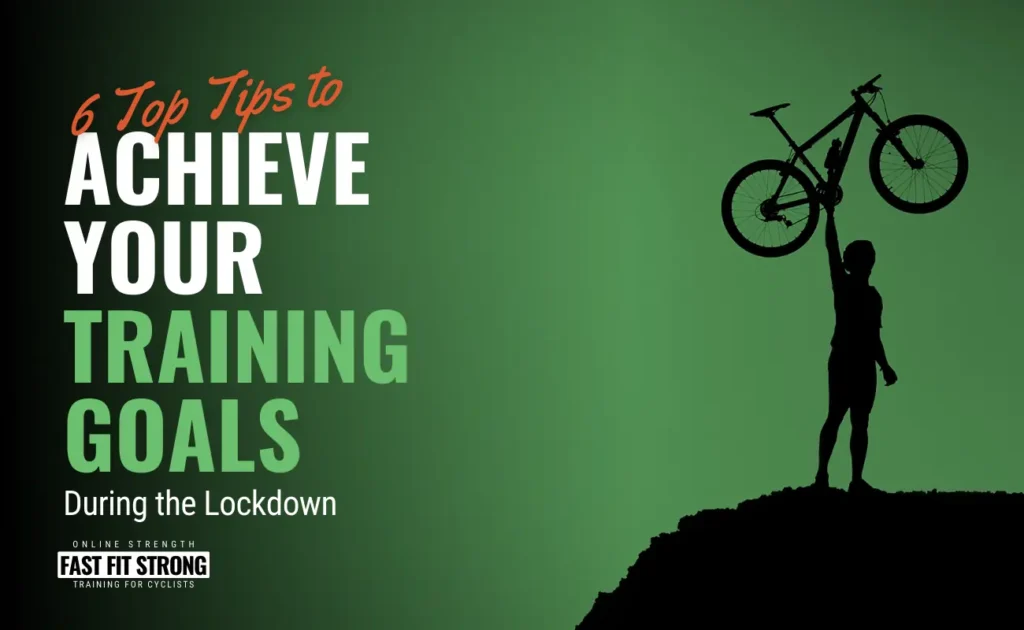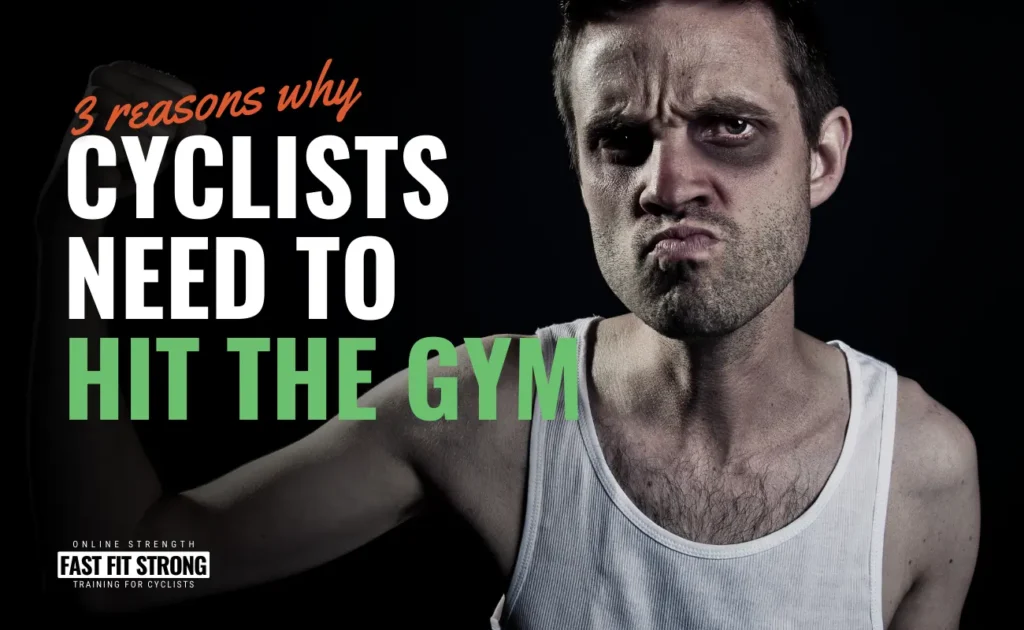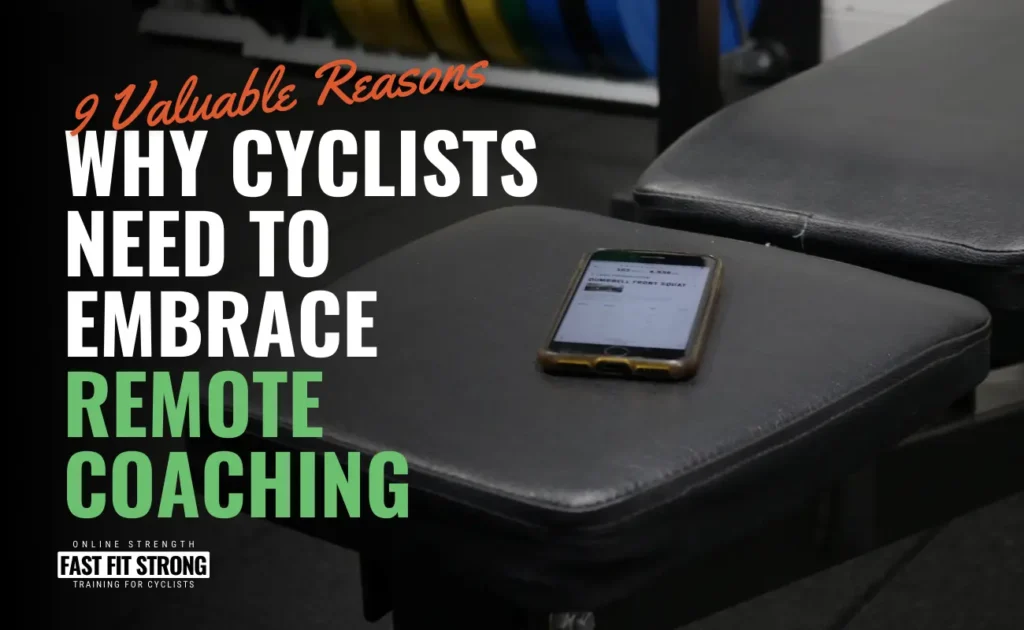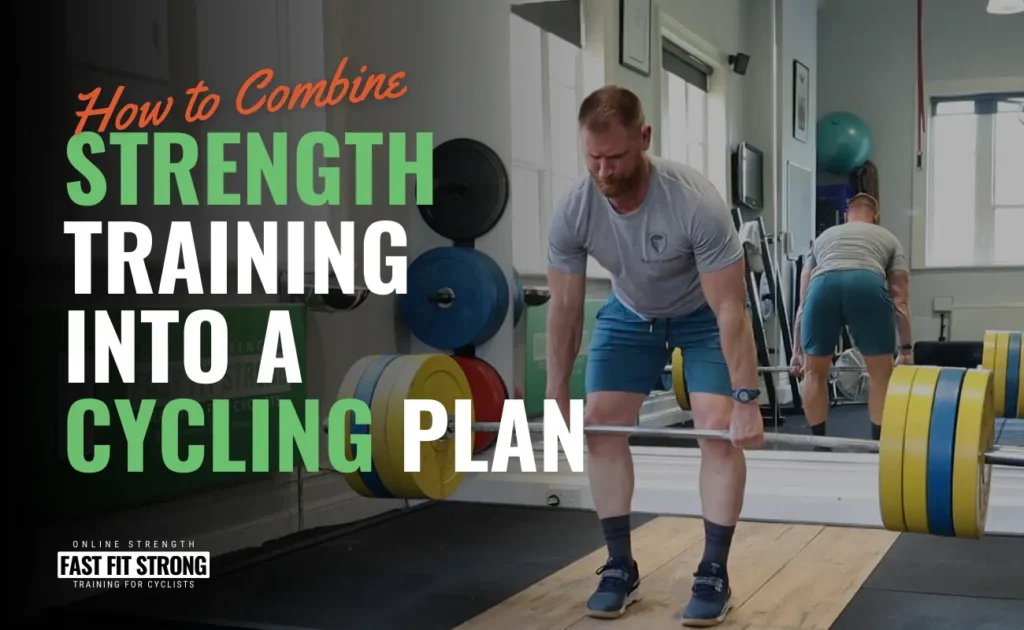Introduction
Strength training can be daunting to some, especially with the perception that it could be detrimental to performance. Riders will either do too little, too much or none at all, and the effect of this can cause a hindrance in training adaptation. So, let’s take a look at how we can optimise our strength training for cycling performance…
Training adaptations, simply put, are the change in the size and type of muscle fibres that are recruited during training. This is beneficial because, the higher the amount of muscle mass you have, any force output becomes lower relative to the maximal output, therefore, increasing your muscular endurance. Recruiting more fast-twitch muscle fibres enable your muscles to contract at a faster rate and helps with aspects such as sprinting at the end of a long race. By only doing “on the bike” training, adaptations are not as effective as strength training.
However, with the correct advice and aids, you can easily get the strength training side of things in order! Let’s start with some reasons as to why riders may shy away from a couple of gym sessions in the week alongside their usual training:
#1 – I don’t know how to fit Strength Training into my training week.
This can be easily overcome with the correct structure and understanding from both coach and athlete. The main goals and priorities of training sessions need to be understood in order to correctly incorporate strength sessions into a week of training.
Throughout the year, the training goals are likely to change as racing increases/decreases and the rider transitions through off-seasons and pre-season. As a rough guide, the winter and non-racing months are an ideal time to increase the workload of strength training both on and off the bike. Through the racing months, strength training will generally decrease in volume, whilst maintaining a level of intensity in order to maintain the condition gained from those winter months.
Through the winter training, it is an ideal time to increase the load you’re lifting as well as the number of sessions – I suggest 3 sessions a week to increase the intensity and get more bang for your buck with different training stimuli. As you come into the racing season, it’s a good idea to maintain the strength you’ve built through the winter.
You don’t want to work super hard in the winter and then lose it all just because there’s racing on the calendar! I would suggest dropping the sessions down to 1- 2 a week (dependent on other training) and keep lifting to 75-80% max load.
#2 – I don’t need the gym – I’m already strong enough.
If this is where you slot in, I love the confidence!
However, nine times out of ten, there will still be areas of weakness that can be strengthened to make you a better rider. The gym isn’t always about how much you can lift and how many reps you can do, it also has a focus of helping imbalances, reducing injuries and of course keeping training fun by mixing things up.
#3 – Strength Training will just make me heavier and slower for long rides/races.
This is definitely not true. If anything, a strength programme will make you faster! Irrelevant of what type of rider you are, whether that be a climber or road sprinter, strength sessions will undoubtedly enhance your abilities on the bike. Strength sessions are the catalyst for major physiological adaptations to make you fitter in general – more so than just an average cardio session, so by doing this as well as your normal training it would be very difficult for you to become slower.
You will obviously gain some muscle mass, which is what people generally perceive as ‘getting heavier’ but who doesn’t want some extra leg definition to show off! To give you more understanding, increasing the number of strength sessions in your weekly training will ultimately improve your Resting Metabolic Rate (RMR).
This is the rate at which your body burns energy when you are at complete rest. Whilst this is increasing, your overall body fat percentage will decrease but Fat-Free Mass (FFM) or lean body mass will increase.
FFM is the metabolically active tissue within the body e.g. internal organs, bone, muscle. So ultimately, the rate at which you can burn energy will increase whilst resting as well as increasing the cross-sectional area of muscle and other aspects such as an increased bone mineral density – therefore a potential increase in body mass. The rate at which this happens may differ depending on gender.
#4 – I don’t want to look like a bodybuilder
The type of sessions that would be done in the gym as well as the number of hours riding would make it difficult to see the physiological changes occur that you would typically see with a weightlifter/bodybuilder. But, remember, this is no correct body stature to have, some people may gain muscle more so than others but the way you look aesthetically doesn’t define you as a bike rider.
What exercises should I be doing?
This becomes more personalised to you but there are a few general movements that should be utilised within programmes for riders. The main one is the back squat, as this is a compound movement, it’s a great one to hit multiple muscle groups at one time whilst also working on hip and ankle flexibility. Another multi-joint movement is the deadlift and is great for cyclists who well tend to rely heavily on our quads which cause imbalances with our hamstrings. Working on deadlifts helps to engage the commonly underdeveloped posterior chain for cyclists. Romanian Deadlifts is another one that is a must in training.
Cyclists will commonly have a dominant and stronger side which may just naturally happen. This is where unilateral movements will help to strengthen any imbalances and help to activate muscles that aren’t being predominantly used when training on the bike. For example, here we would look to include Pistol Squats as well as Split Squats.
What may work for others may not be the ideal training strategy for you, so finding what works best and enhancing how you move is what you should be looking at first. Starting off with the basics and then progressing from there will be the main process to go with. As cyclists, we spend the majority of the time hunched over in a cramped and unnatural position, this is why having an extra training stimulus will help with strength and power in all ranges of the pedal stroke – giving more focus to the anterior chain (for the power phase of the pedal stroke – pushing down) as well as the posterior chain (pulling up). Keeping good form on the bike is an obvious necessity, which can be practised each time you go for a ride but with extra core training (e.g. Planks/Deadbugs) this can help massively and avoid any rocking/instability, which will enable you to be stronger on the bike in the long run as well.
So, what can we take from this?
Adding regular sessions to enhance strength and general movement alongside on-bike training will make you an all-around better athlete. Regardless of your training history, or lack of it, there will be a programme that will suit you into making these enhancements happen.
